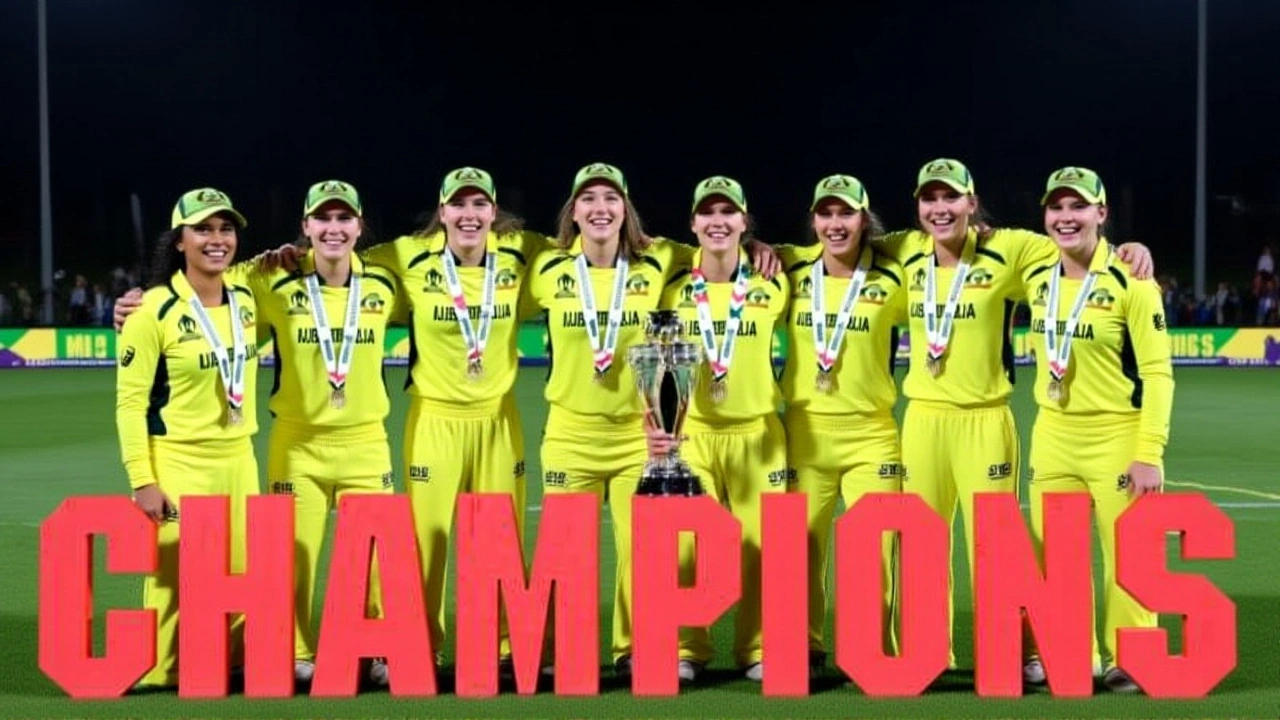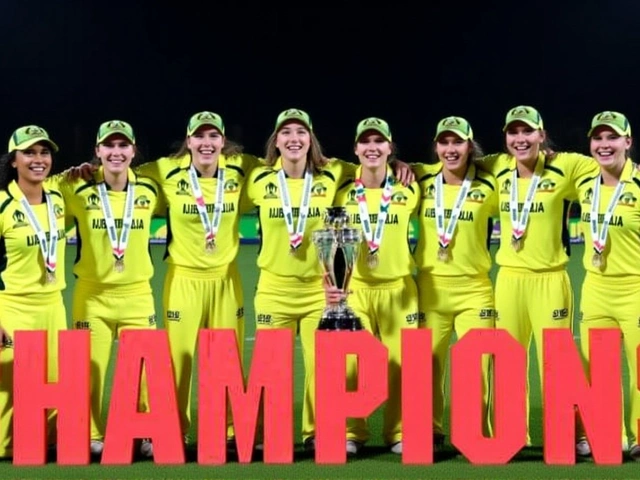
When International Cricket Council announced on 23 January 2024 that India will stage the Women's Cricket World Cup 2025, the cricket world collectively held its breath. The decision, made at an ICC Board meeting in Dubai, United Arab Emirates, means the sub‑continent’s massive fanbase will once again be the epicentre of the sport’s premier women’s tournament, slated for July 1‑27, 2025.
Background and Previous Hosting
India’s first stint as host came back in 2013, when Australia lifted the trophy in Kolkata’s Eden Gardens. Since then, the ICC’s governance has evolved – the International Women’s Cricket Council merged into the ICC in 2005, creating a single body responsible for both genders. The 2025 edition will be the 12th iteration of the competition, tracing its roots to the inaugural 1973 event in England.
Bid Details and Financial Commitment
The winning proposal was shepherded by the Board of Control for Cricket in India (BCCI). In a bid presented to the ICC’s Events Committee – chaired by Richard Thompson, chief executive of England and Wales Cricket Board – the BCCI pledged a USD 15.7 million budget for operations and stadium upgrades. Planned refurbishments target three marquee venues: Wankhede Stadium in Mumbai, Arun Jaitley Stadium in Delhi, and M. Chinnaswamy Stadium in Bengaluru.
ICC chief executive Geoff Allardice summed it up: “India’s proven track record – think the 2023 Men’s World Cup that generated USD 1.2 billion – made the decision a no‑brainer for the Board.” The bid also secured a promise that 100% of group‑stage matches will kick off at 18:30 IST, maximising prime‑time TV audiences.
Tournament Format, Teams and Schedule
The format mirrors previous editions: eight teams, split into two groups of four. Four slots are automatically handed to the 2022 semifinalists – Australia, England, South Africa, and West Indies – while the remaining four will be decided by the ICC Women’s Championship cycle (2022‑2025) and a qualifying tournament.
The final round of the championship runs 20‑28 April 2025 in Sylhet, Bangladesh. The qualifier, slated for 3‑15 February 2025 at Harare Sports Club in Zimbabwe, will decide the last two berths.
Defending champions Australia will roll into the event under captain Alyssa Healy (34) and head coach Shelley Nitschke (48). Host nation India will be led by veteran skipper Harmanpreet Kaur (35) with coach Amol Mazumdar (49) at the helm.
Prize Money, Broadcast Deals and Economic Impact
Prize money jumps to USD 8.2 million – a 64 % increase over 2022 – with the champions pocketing USD 2.46 million and runners‑up USD 1.23 million. This milestone aligns with the ICC’s Gender Equity Strategy, which aims for parity with the men’s tournament by 2030.
Broadcast rights have already been sold: Disney Star India secured the Indian sub‑continent package for USD 310 million, while Sky Sports grabbed UK rights for GBP 42 million. Global projections put broadcast revenue at roughly USD 475 million.
Ticketing opens on 1 March 2025 via BookMyShow. Prices range from INR 400‑2,500 (≈USD 4.80‑30) for general admission, with premium hospitality starting at INR 15,000 (≈USD 180). The economic ripple is expected to mirror the 2023 men’s edition, where host cities reported a combined USD 1.2 billion boost in tourism, hospitality and ancillary services.
Sustainability, DRS Changes and Legacy
In line with the ICC’s 2024 Sustainability Framework, every venue must achieve ISO 20121 certification by 30 June 2025. That means carbon‑offsetting for 100 % of emissions, waste‑diversion targets and renewable‑energy sourcing.
Technical tweaks also arrive: the Women’s Committee, chaired by Clare Connor, confirmed a new Decision Review System that limits teams to two reviews per innings – a move intended to keep matches flowing while preserving umpire authority.
Off‑field, the tournament will be overseen by a veteran referee panel led by former Australian batsman David Boon, with England’s Sue Redfern and Zimbabwe’s Andy Pycroft as permanent members.
The ICC Chairman, Gregory C. Barclay, summed up the strategic vision: “Awarding India both the 2025 Women’s ODI World Cup and the 2026 Men’s T20 World Cup recognises the country’s commercial clout while accelerating our gender‑equity agenda.”
Key Facts
- Host: India (three venues confirmed)
- Dates: 1 July – 27 July 2025
- Teams: 8 (Australia, England, South Africa, West Indies + 4 qualifiers)
- Prize pool: USD 8.2 million
- Projected global viewership: >1.2 billion
Frequently Asked Questions
How will the new DRS rule affect match outcomes?
Limiting each side to two reviews per innings is expected to speed up play and reduce tactical hoarding of challenges. Teams will likely reserve reviews for clear‑cut edge or LBW decisions, making every review a high‑stakes call.
What economic impact can host cities anticipate?
Analysts forecast a combined boost of around USD 1.1 billion across hospitality, transport and retail sectors, mirroring the 2023 men’s World Cup. Local jobs will rise temporarily, and infrastructure upgrades will leave a lasting legacy.
Which teams have secured automatic qualification?
Australia, England, South Africa and West Indies earned spots by finishing in the top four at the 2022 Women’s World Cup. The remaining four places will be filled via the Women’s Championship rankings and the 2025 Qualifier in Harare.
When and where can fans buy tickets?
Ticket sales launch on 1 March 2025 through BookMyShow. Prices start at INR 400 for general admission and rise to INR 15,000 for premium hospitality packages. Seats will be allocated on a first‑come, first‑served basis, with a portion reserved for local schools and cricket academies.
How is the tournament addressing sustainability?
All venues must obtain ISO 20121 certification, ensuring carbon‑offsetting, waste reduction and sustainable procurement. The ICC will also partner with local NGOs to plant trees equivalent to the tournament’s estimated 25,000 tonne CO₂ footprint.


Comments
Post Comment